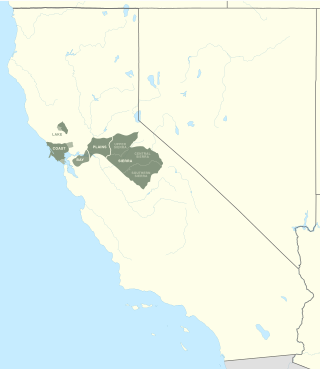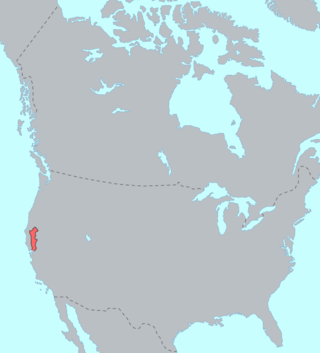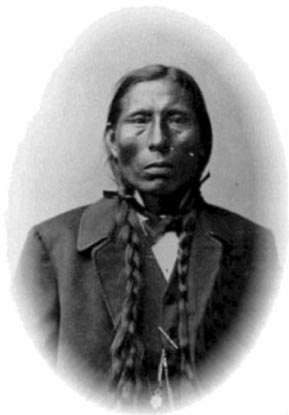
Colusa County is a county located in the U.S. state of California. As of the 2020 census, the population was 21,839. The county seat is Colusa. It is in the North Valley of California, northwest of the state capital, Sacramento.

The Miwok are members of four linguistically related Native American groups indigenous to what is now Northern California, who traditionally spoke one of the Miwok languages in the Utian family. The word Miwok means people in the Miwok languages.

Coast Miwok are an indigenous people that was the second-largest group of Miwok people. Coast Miwok inhabited the general area of modern Marin County and southern Sonoma County in Northern California, from the Golden Gate north to Duncans Point and eastward to Sonoma Creek. Coast Miwok included the Bodega Bay Miwok, or Olamentko (Olamentke), from authenticated Miwok villages around Bodega Bay, the Marin Miwok, or Hookooeko (Huukuiko), and Southern Sonoma Miwok, or Lekahtewutko (Lekatuit).
The Bay Miwok are a cultural and linguistic group of Miwok, a Native American people in Northern California who live in Contra Costa County. They joined the Franciscan mission system during the early nineteenth century, suffered a devastating population decline, and lost their language as they intermarried with other native California ethnic groups and learned the Spanish language.

The Wintu are Native Americans who live in what is now Northern California. They are part of a loose association of peoples known collectively as the Wintun. Others are the Nomlaki and the Patwin. The Wintu language is part of the Penutian language family.

The Wintun are members of several related Native American peoples of Northern California, including the Wintu (northern), Nomlaki (central), and Patwin (southern). Their range is from approximately present-day Lake Shasta to San Francisco Bay, along the western side of the Sacramento River to the Coast Range. Each of these tribes speak one of the Wintuan languages. Linguistic and archaeological evidence suggests that the Wintun people probably entered the California area around 500 AD from what is now southern Oregon, introducing bow and arrow technology to the region.

The Maidu are a Native American people of northern California. They reside in the central Sierra Nevada, in the watershed area of the Feather and American rivers. They also reside in Humbug Valley. In Maiduan languages, Maidu means "man."

Sonoma Valley is a valley located in southeastern Sonoma County, California, in the North Bay region of the San Francisco Bay Area. Known as the birthplace of the California wine industry, the valley is home to some of the earliest vineyards and wineries in the state, some of which survived the phylloxera epidemic of the 1870s and the impact of prohibition in the early 20th century. Today, the valley's wines are promoted by the U.S. federal government's Sonoma Valley and Carneros AVAs.

Wintuan is a family of languages spoken in the Sacramento Valley of central Northern California.
The Nomlaki are a Wintun people native to the area of the Sacramento Valley, extending westward to the Coast Range in Northern California. Today some Nomlaki people are enrolled in the federally recognized tribes: Round Valley Indian Tribes, Grindstone Indian Rancheria or the Paskenta Band of Nomlaki Indians. The Nomlaki were bordered by the Wintu (Wintun) in the north, the Yana in the northeast and east, the Konkow (Maiduan) in the east, the Patwin (Wintun) in the south, and the Yuki in the west.

The Suisunes were a Patwin tribe of Wintun people, originating in the Suisin Bay and Suisun Marsh regions of Solano County in Northern California. Their traditional homelands stretched between what is now Suisun City, Vacaville and Putah Creek around 200 years ago. The Suisunes' main village, Yulyul, is believed to be where Rockville, California is located today. Father Abella, visitor to the tribe in 1811, indicated they resided in the present location of Fairfield, north of the Suisun Bay. One of the Suisunes' primary food sources was acorns. Their diet also included fish as well as miner's lettuce. Their huts were conical wikiups made of rushes or tule thatch.

The Plains and Sierra Miwok were once the largest group of California Indian Miwok people, indigenous to California. Their homeland included regions of the Sacramento Valley, San Joaquin Valley, and the Sierra Nevada.

Kuksu, was a religion in Northern California practiced by members within several Indigenous peoples of California before and during contact with the arriving European settlers. The religious belief system was held by several tribes in Central California and Northern California, from the Sacramento Valley west to the Pacific Ocean.
Wintu-Nomlaki traditional narratives include myths, legends, tales, and oral histories preserved by the Wintu and Nomlaki people of the western Sacramento Valley in northern California.

The Kletsel Dehe Wintun Nation of the Cortina Rancheria is a federally recognized tribe of Indigenous people of California. They are Wintun people, who historically spoke Wintuan languages.

Northeastern Pomo, also known as Salt Pomo, is a Pomoan language of Northern California. There are no living fluent speakers. It was spoken along Stony Creek, a tributary of the Sacramento River. Northeastern was one of seven mutually unintelligible Pomoan languages spoken in Northern California. Unlike the other six Pomoan languages(going to north to south: Northern Pomo, Central Pomo, Eastern Pomo, Southeastern Pomo, Kashaya Pomo, Southern Pomo), Northeastern Pomo was not spoken in an area immediately contiguous with any other Pomoan-speaking area. Northeastern Pomo speakers were ringed by speakers of Yuki, Nomlaki, and Patwin; Yuki is unrelated to Pomoan or Nomlaki and Patwin, both of which are within the Wintu language family.
The Cachil DeHe Band of Wintun Native Americans of the Colusa Native Americans Community of the Colusa Rancheria is a federally recognized tribe of Wintun Native Americans from central California.
Patwin (Patween) is a critically endangered Wintuan language of Northern California. As of 2021, there was one documented first language speaker of Patwin. As of 2010, Patwin language classes were taught at the Yocha Dehe Wintun Nation tribal school.
The Yocha Dehe Wintun Nation is a federally recognized tribe of Wintun people, specifically Patwin people or southern Wintun, in Yolo County, California. They were formerly known as the Rumsey Indian Rancheria of Wintun Indians of California.














